| |
|
|
|
John Clarence Liverman
Lance Corporal
H CO, 2ND BN, 4TH MARINES, 3RD MARDIV, III MAF United States Marine Corps Silver Spring, Maryland July 10, 1949 to December 11, 1968 JOHN C LIVERMAN is on the Wall at Panel W36, Line 4 See the full profile or name rubbing for John Liverman |
 |
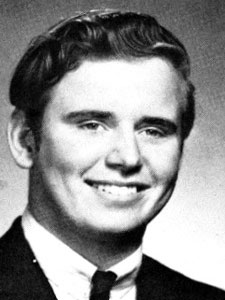
|
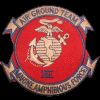
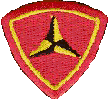
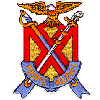
| |
REMEMBERED ACROSS THE YEARSFrom a family friend,Mark J. Hughes nautibuoy@hotmail.com Lance Corporal John Liverman grew up next door to Frank "Trippy" Streeks. After high school, both young men entered the Marine Corps, and both died in Vietnam. Author and PARADE Magazine editor James Webb wrote of John Liverman:
It was there, 10 years ago, that I first noticed Troy Liverman. He was on his knees, tending a grave ... I assumed he was a retired career solder who had been wounded in World War II and Vietnam, perhaps visiting the grave of a departed wife. But on my next visit, I went to the grave and saw that it belonged instead to his son. Marine Lance Corporal John C. Liverman, 19, had been killed in Vietnam on December 11, 1968.
I would see Troy Liverman several times a year after that, on his knees before his son's headstone.
It took me a long time to approach Troy Liverman, but once we met, it was only minutes before I began to think of him as a friend.
He became a soldier at 17 and in the final months of World War II was seriously wounded by a German mortar shell. ... Like their father, when their time came, [his] three sons volunteered for the military. The eldest, Robert, now a corporate executive in Texas, was wounded in Vietnam in 1968 as an Army lieutenant, calling artillery onto his own position to stop an enemy attack. The youngest, James, who died five years ago of a liver ailment, served in the Marines after High School. But the middle son, Johnny, had it the hardest.
A shadowbox on a wall in Troy Liverman's rural Virginia home binds him and his sons together -- four men, three Bronze Stars, six Purple Hearts.
Johnny reached Vietnam in January 1968, just in time for the Tet Offensive, the worst fighting of the war. He was 18. His childhood friend and next-door neighbor, "Trippy" Streeks, had just been killed during the siege of Khe Sanh.
Johnny reported to the famed "Walking Dead" -- First Battalion, Ninth Marines -- and was immediately thrown into heavy combat. In early March he was wounded in the shoulder by shrapnel. In late April he was hit again by shrapnel and suffered a serious gunshot wound to his thigh.
His wounds entitled Johnny to go to Okinawa, where he could have remained for the rest of his tour. But he grew restless. Learning that a close friend from his old unit had been killed, he volunteered to return to combat.
Back in Vietnam, Johnny was assigned to the Second Battalion, Fourth Marines, in the rugged terrain near the demilitarized zone. On Dec. 11, 1968, his company fought an extended battle along infamous Foxtrot Ridge. Johnny was wounded for the third time early in the battle. As the fight wore on, a bullet hit him in the head.
Johnny was buried a few days after Christmas on a slope that looks out from Arlington toward the monuments on the other side of the Potomac River, a short walk from the Iwo Jima Memorial.
Every time I pass Johnny Liverman's grave in my strolls through Arlington, I think of son and father, father and son. I am thankful I lived to bury a father who had entered his dotage, and I pray that when I am a very old man, my son may likewise bury me. But always in my heart I will honor Johnny and the others like him, who got straight with themselves, who disregarded shrapnel and gunshot wounds and went back to finish the job. Who gave us everything they had. And who, as we grow old, will always be 19.
The full text is located on the |
|
Uncle Johnnie Your service and commitment to our county will live forever. Though I never met you we shall meet on the other side. You have made America proud.
Love from your nephew,
MARINES LIVE FOREVER
|
|
I never had the pleasure of meeting you, however I have had the pleasure of meeting your father, Troy (Mr. Liverman, as I appropriately call him). You grew up and went to Vietnam with my father, William Carroll. You were his longest and closest friend. From the stories both my father and your father have told me, you were one of a kind, and I wouldn't even try to question it. I'm sure you're disgusted by the muck the youth are saying about our current war and Vietnam, and I'm grateful for meeting your father, who believes in one thing, and sticks to it no matter what the consequences are. Watch over us, we all miss you.
From the daughter of a family friend, |
A Note from The Virtual WallIn early December 1968 the 2nd Battalion, 4th Marines was tasked with clearing two ridgelines about 3 kilometers north of Dong Ha Mountain of their North Vietnamese Army occupants. During the afternoon of 07 December the Battalion's rifle companies were airlifted into their initial positions and settled in for the night. On the morning of 08 Dec the companies moved out toward their assigned objectives.At 1525 a squad patrol from 3rd Platoon, Echo Company received fire from a treeline and entrenchments at YD033644. Two squads were dispatched as reinforcements, but the attacking Marines found themselves caught in a crossfire and unable to advance. With night approaching Echo recalled the platoon, which was forced to abandon the bodies of three men known to have been killed but which was able to bring out its nine wounded. Air and artillery fires were then placed on the enemy position. At daybreak on 09 Dec the four rifle companies moved to clear the NVA position but found that the NVA had withdrawn. The bodies of the three Marines from Echo were recovered - they were
On the 11th, Fox moved out at first light and by 0825 was receiving small arms and mortar fire. An aerial observer helped direct counterfires and directed the Marines toward visible enemy positions. As Fox approached YD024660 its lead elements found an entrenched enemy concealed in dense vegetation. Fox Company continued its assault until stopped in place by enemy fires. As later discovered, Fox had fought its way into the center of a large, well laid out bunker complex - and once there found it near impossible to maneuver its way out without abandoning its wounded. Shortly after the first contact Hotel Company had been dispatched to assist Fox and reached the area at about noon. Once in position, Hotel's additional firepower - and that of supporting arms - persuaded the NVA to withdraw from the complex and by 1620 the fighting had stopped. Golf 2/4 was sent to the position, and the three rifles companies established a night defensive position on the western side of the bunker complex. Thirteen Americans died and thirty-one were wounded in the fighting on what became known as "Foxtrot Ridge". They were


Lance Corporal John C. Liverman rests in Grave 376, Section 52, Arlington National Cemetery, with other men of honor and integrity. |
| Contact Us | © Copyright 1997-2019 www.VirtualWall.org, Ltd ®(TM) | Last update 08/15/2019. |
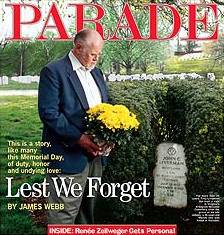 My office looks out on Arlington National Cemetery. ... I often stroll its rolling hills and think of those who served our country during troubled times, now gathered in their final formations.
My office looks out on Arlington National Cemetery. ... I often stroll its rolling hills and think of those who served our country during troubled times, now gathered in their final formations.